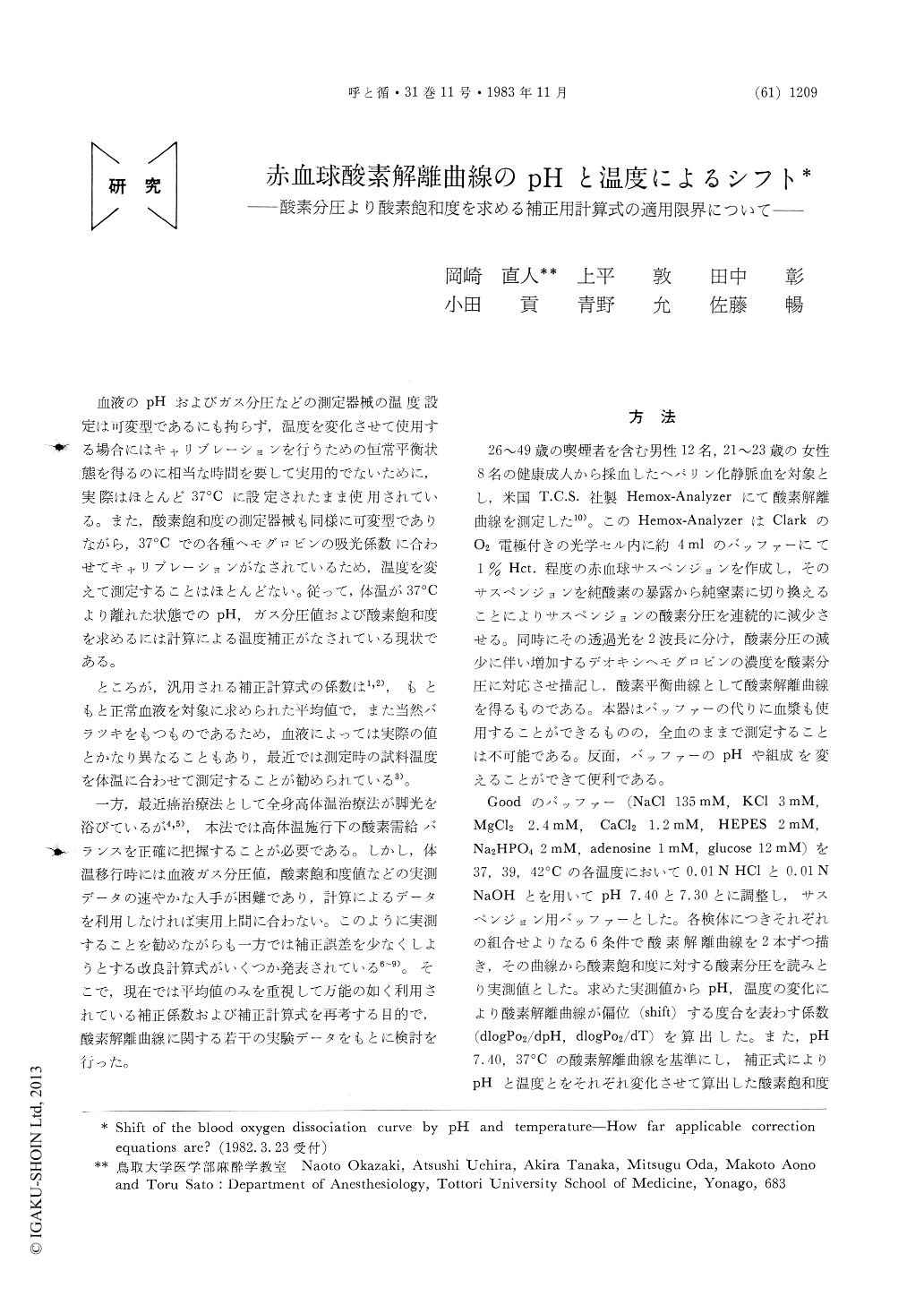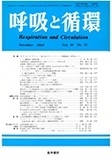Japanese
English
- 有料閲覧
- Abstract 文献概要
- 1ページ目 Look Inside
血液のpHおよびガス分圧などの測定器械の温度設定は可変型であるにも拘らず,温度を変化させて使用する場合にはキャリブレーションを行うための恒常平衡状態を得るのに相当な時間を要して実用的でないために,実際はほとんど37℃に設定されたまま使用されている。また,酸素飽和度の測定器械も同様に可変型でありながら,37℃での各種ヘモグロビンの吸光係数に合わせてキャリブレーションがなされているため,温度を変えて測定することはほとんどない。従って,体温が37℃より離れた状態でのpH,ガス分圧値および酸素飽和度を求めるには計算による温度補正がなされている現状である。
ところが,汎用される補正計算式の係数は1,2),もともと正常血液を対象に求められた平均値で,また当然バラツキをもつものであるため,血液によっては実際の値とかなり異なることもあり,最近では測定時の試料温度を体温に合わせて測定することが勧められている3)。
In the treatment of inoperable malignancy with hyperthermic perfusion as high as 42℃, it is essential to obtain correct information on the oxygen delivery and uptake of the patient. The equations for conversion of oxygen tension into saturation are commonly used in the clinical situations, because calibration at different temperatures for direct measurements requires too long time. In this point of view, we investigated the accuracy of these equtions comparing results of direct measurements by means of oxygensatura-tions.
The blood samples were offered from twenty healthy volunteers. Blood oxygen equilibrium curves were measured by Hemox-Analyzer under six conditions from the matrix of pH (7.40 and 7.30) and temperature (37, 39 and 42℃), respectively. The Bohr coefficients (Δlogpo2/ΔpH) calculated from half saturation of hemoglobin were -0.496±0.139, 0.465±0.140, -0.456±0.155 at 37, 39 and 42℃, respectively. The temperature coefficients (Δlogpo2/ΔT) were 0.0267±0.0070・ deg-1 at pH=7.40 and 0.0240±0.0076・deg-1 at pH=7.30 in the temperature range from 37 to 39℃, while in the temperature range from 37 to 42℃ 0.251±0.0036・deg-1 at pH 7.40 and 0.0235 ±0.004, 0・deg-1 at pH=7.30, respectively. The results obtained by direct measurements coincided with the average values delivered from the equa-tions, but the former shows fairly large standard deviations. Therefore, we concluded that values calculated by means of the equations may differ from the actual values when the body temperature drifts far from 37℃. We speculated the following two reasons to explain the discrepancy between both: 1) the samples were composed of a variety of erythrocytes population in all ages, 2) the coeffic-ient of each factor must be non-constant and dependent by other factors in the equations.

Copyright © 1983, Igaku-Shoin Ltd. All rights reserved.


